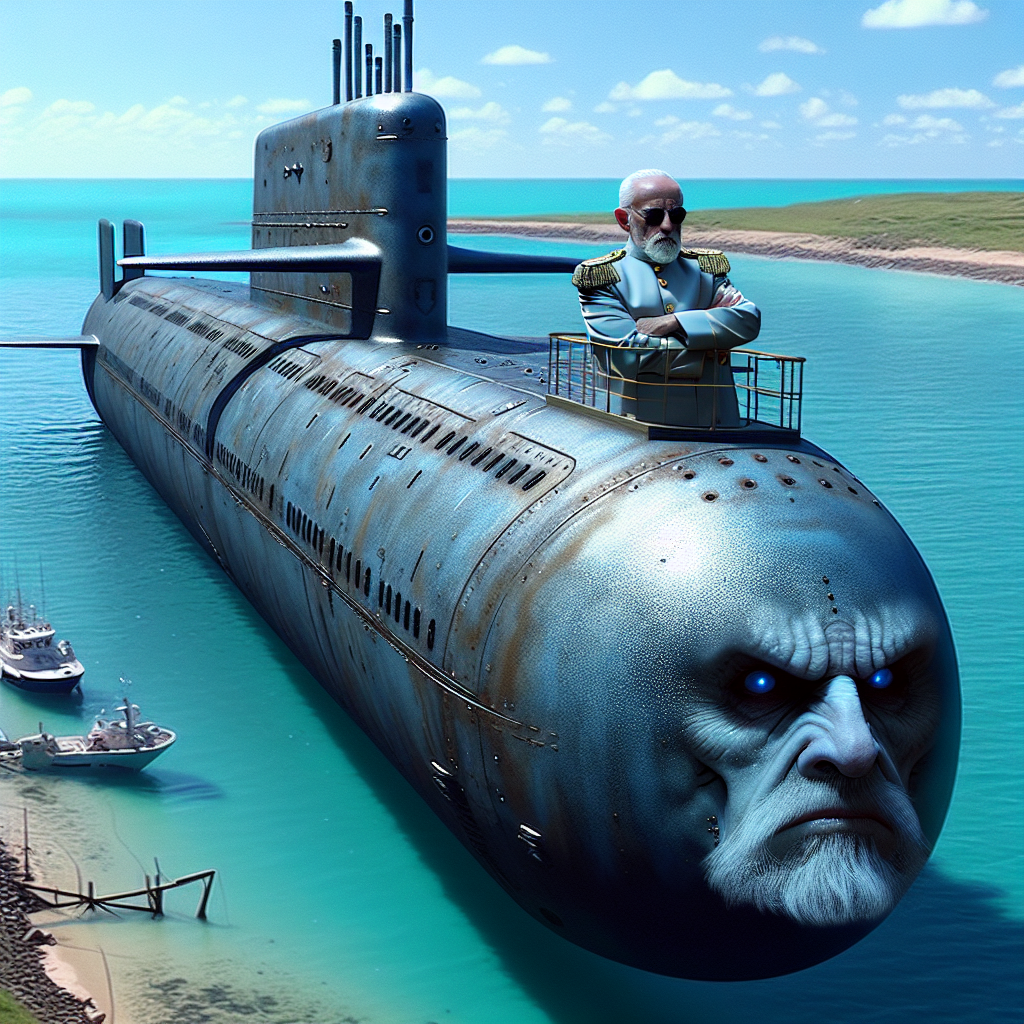Royal Navy's advanced £1.3bn 'hunter-killer' submarine ready for duty after 'Area 51' visit

Well, here we go again. Another big shiny piece of military hardware flexing its muscles and ready to stir the waters, quite literally. The Royal Navy's new £1.3 billion "hunter-killer" submarine has been reported as “ready for duty” after a mysterious trip to somewhere dubbed 'Area 51'—a nickname that’s probably intended to give it a cloak-and-dagger aura, though I doubt any actual aliens popped out to inspect it. Now, while the tech in this beast sounds impressive, and the navy quite rightly touts it as a pinnacle of modern defense, I can’t help but raise an eyebrow. There’s something a little old-fashioned about the whole shebang, like watching your 60s dad try to master texting on one of those fancy smartphones but sticking to his rotary style words and pauses.
First off, the very term "hunter-killer” submarine conjures images of some underwater predator lurking silently beneath the waves, scanning for its prey. It’s a phrase dripping with Cold War nostalgia and the sort of martial posturing that feels a bit out of place in today’s world—or at least in the one where we were supposed to have moved on from overtly aggressive talk. Yet here it is, a submarine designed to track and destroy other subs and surface ships, absolutely decked out in the latest stealth tech and ready to play cat and mouse in the oceans.
I understand the strategic necessity; in an increasingly tense geopolitical climate, governments are doubling down on their defenses. We hear about advances in hypersonic missiles, cyber warfare, and unmanned drones, but the old guard still holds firm beneath the waves. Submarines don’t just vanish as relics of the past. They’re still very much the lurking ghosts in the deep, silent and threatening, a reminder that beneath the dazzling surface of diplomacy, power games never fully stop.
But while we marvel at this tech marvel’s capabilities, I’m reminded of the cost—not just in pounds but in priorities. £1.3 billion is a weighty sum that could, arguably, be spelled out in many other ways, ways that might improve not only national security but health, education, or social welfare. I’m not naive; defense is essential. But there seems to be this transparent toe-dip into the deep end of arms spending every few years where extravagance is paraded as necessity.
Then there’s the question of secrecy and mystique. The article mentions an "Area 51" visit, clearly a nickname hinting at covert testing or classified upgrades. That’s all grand in the name of national security, but it feels theatrical in a way that might not resonate well outside dedicated defense circles. In an era where transparency is prized (sometimes), there’s a surviving relic from my generation’s youth—the whole cloak-and-dagger style secrecy, the knowing wink that hushes citizens as if they’d be kept safer by ignorance. It’s part fascination and part frustration, watching the state hold these cards close while we’re left guessing.
Moreover, this beast of a submarine reminds me how much of the present is still shaped heavily by past conflicts. This new vessel evokes not just cutting-edge tech but longstanding traditions of showmanship and deterrence. Deterrence has always been about signaling to potential foes that you’re ready and able to strike back. That can be uncomfortable to swallow in a 21st-century world where many hoped diplomacy, intelligence-sharing, and international institutions would take a larger front seat than brute force.
Yet, reality presses on. Even as efforts continue to soften international tensions through talks and treaties, the undercurrent of suspicion and preparedness persists. Modern defense is not just about fighting last century’s threat; it’s about anticipating tomorrow's unknowns—which might be why the Royal Navy has invested in this submarine’s tech upgrades and stealth capabilities. These vessels may well be the unsung sentinels watching the high seas for signs of trouble, hidden from public view, ready to dive deep at a moment’s notice.
There’s a certain wholesome reassurance in knowing this kind of dedication goes into national defense. As someone who remembers a world where global conflict felt much closer to home, there is comfort in seeing that readiness—not just in muscle but in patience and professionalism. Still, I can’t shake the feeling that the grandeur and secrecy surrounding such machines also underline a world that hasn’t quite outgrown its fears or learned to channel those energies into something more constructive.
Perhaps this new submarine is both a sign of strength and a symbol of caution. A reminder that, while progress hums on the internet and in space tech, beneath the waves the age-old game continues: who can hide best, who can strike first, who will watch the watchers? In the end, it feels like an expensive message sent not just to other nations but to ourselves—that we still plan for war as though peace were a distant dream.
And so I sit back, slightly annoyed but quietly grateful that the lads at the Royal Navy are there, in some remote dry dock or perhaps a secret ‘Area 51’ of their own, making sure this leviathan is ready to do what it must. It's a bit like watching a mid-century dad trying to navigate the complexities of social media—old-school at heart, trying to keep up in a fast-changing world, a little out of touch, but fundamentally trying to keep everyone safe.
Let’s just hope this investment pays off in keeping the peace, rather than fueling the next wave of tensions we all secretly wish to avoid.

